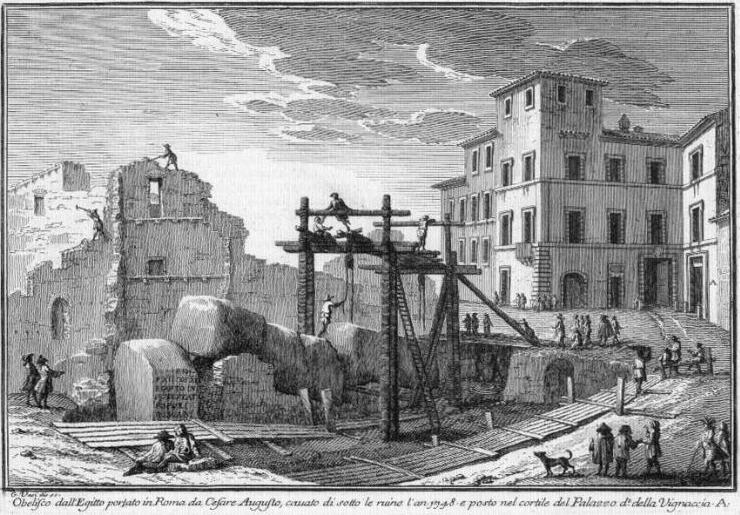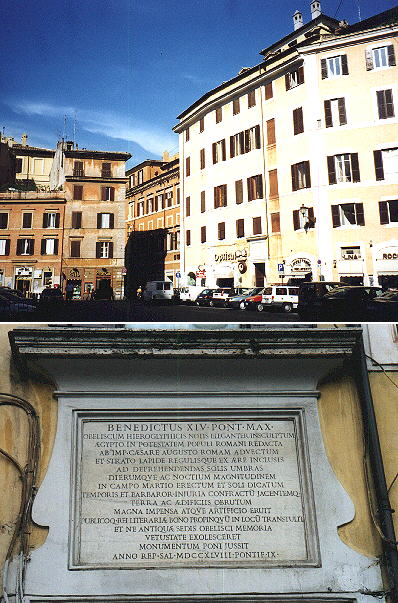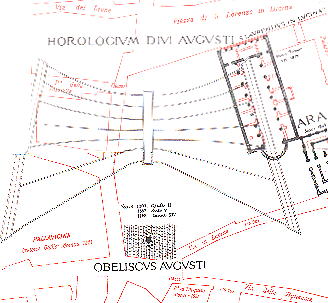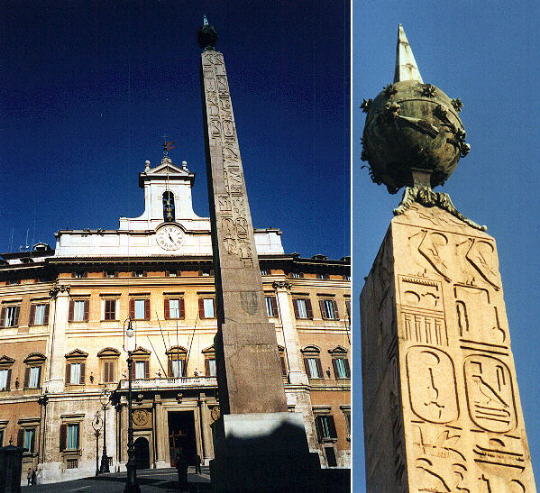  Obelisco cavato di sotto le ruine (Book 2) (Day 4) (Rione Colonna) In this page:
Vasi published his second book in 1752 and he included in it an extra plate dedicated to the excavation in 1748 of an obelisk brought to Rome by Augustus. The existence of the obelisk had been known since the end of the XVIth century, but it was split into several pieces which lay below some buildings and thus its recovery was difficult and expensive. Eventually Benedictus XIV (who was Pope at the time the book was published) succeeded in recovering it.
A plate in what is today Piazza del Parlamento tells the whole history of the obelisk which was originally erected by Psammetichus II in the 7th century BC and then brought to Rome by Augustus who placed it as a sundial in a vast square (Horologium Divi Augusti) where its shadow indicated the hours of the day and the days of the year (that perhaps explains how it was thought of using the obelisk in St. Peter's square for the same purpose).
The butterfly shaped area where the Horologium was located is now between Piazza S. Lorenzo in Lucina (North) and Piazza del Parlamento (South).
Pius VI in 1789 moved the obelisk to Piazza
di Montecitorio where it was put on top of what remained of a column
erected by Antoninus Pius. As usual the Pope crowned the obelisk with a
symbol of his coat of arms, but he added a peak as a reminder of its use
as sundial (to see all the obelisks of Rome click here).
Next plate in Book 2: Piazza Colonna Next step in Day 4 itinerary: Chiesa dell'Immacolata Concezione in Campo Marzio Next step in your tour of Rione Colonna: Palazzo di Fiano
Go
to |
All images © 1999 - 2002 by Roberto Piperno. Write to romapip@quipo.it




